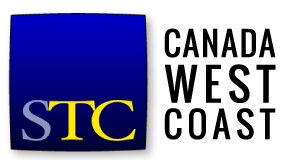 This was the first meeting of the fall season and the group opened with personal introductions and tales of summer trips, or trips that were not taken due to the wildfires and COVID-19 that have sadly ravaged our province. After welcoming a first-time guest from Vancouver and a returning technical writing student from Mount Royal University in Calgary, the host shared details of a short-term job posting.
This was the first meeting of the fall season and the group opened with personal introductions and tales of summer trips, or trips that were not taken due to the wildfires and COVID-19 that have sadly ravaged our province. After welcoming a first-time guest from Vancouver and a returning technical writing student from Mount Royal University in Calgary, the host shared details of a short-term job posting.
The group commented on the chapter’s recent webinar, where Joyce Lam from Precision Content Inc. delivered a great presentation on microcontent. The meaning is exactly as it sounds: small content chunks which can be compiled in a variety of ways and delivered in multiple channels. It uses the best practices of minimalist writing and enables the standardization of content for automated delivery systems. The buzzword also encompasses an umbrella of items such as Top 10 lists, mini tables of contents (TOCs), tips, and so on: all useful techniques that technical writers can apply to content to help readers quickly find information.
A question was asked about other relatively new terms in our industry. What are user experience (UX) and user interface (UI)? The term UX refers to the experience a user has with a product or service. UI refers to the aesthetic elements through which people interact with a product. The functions are interdependent and involve writing. Another related aspect is human-computer interaction (HCI): research in the design and use of computer technology, which focuses on the interfaces between people (users) and computers.
There was some discussion about the tax implications and pros and cons of working on American contracts. Pros: the Canadian/US dollar exchange rate is currently quite advantageous to Canadian writers; and collecting GST usually isn’t required, so your invoicing is simpler and the client’s cost is lower. An important tip: make sure that you have a good accountant to ensure that you’re following the tax laws of both countries.
Additional discussion continued regarding technical-editing certification and the different types of editing. Descriptions of these can vary; one point of reference is the Editors Canada definitions of the levels of editing.
The host thanked everyone for their lively participation during the hour and invited all to attend next month’s meeting.
The Tech Comm Café provides networking opportunities, job leads, answers to work-related dilemmas, and a burst of professional energy to keep you motivated. We discuss technical writing tools and techniques, career planning, portfolios, and anything else related to working as a technical communicator.
We welcome anyone who’s interested in technical communication — contractor, in-house, student, long-time tech writer, STC member, non-member, career-changer, or recruiter. We hope to see you at the next meeting!
Next Meeting: ONLINE on Wednesday, November 17, 2021
• Subscribe to receive email announcements of future meetings.
• If you plan to attend, please RSVP by 4 p.m. Wednesday, November 17, to receive login instructions.
Date: Wednesday, November 17
Time: 7:00-8:00 p.m. Pacific Time
Location: Online via Zoom
Agenda
1. Introductions. Take 60 seconds to introduce yourself, your background, current activities. A good chance to try out that new elevator speech.
2. Announcements and job leads. If you know of an interesting event or a job opening, or you’re looking for work, share it with the group.
3. Brainstorming Q&A. Ask about a work-related problem and discuss potential solutions.
4. Speed networking. Make new contacts and discuss your professional backgrounds and goals.
